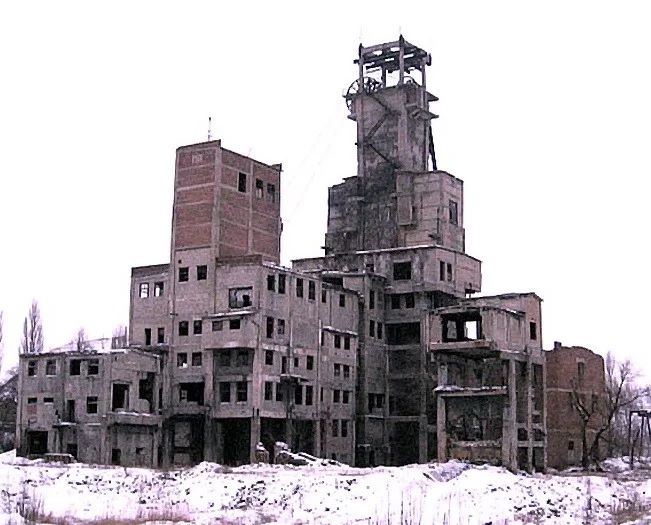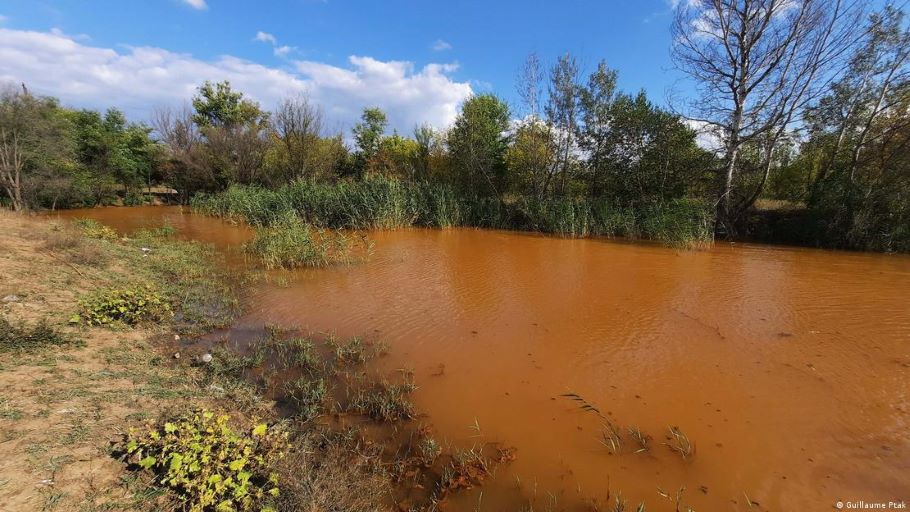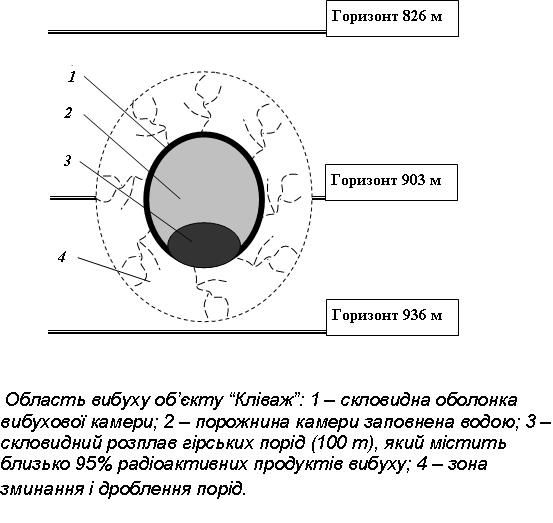A new nuclear disaster is looming in eastern Ukraine
There’ve been more than five years since Russia’s proxy administration in the occupied Donbas region decided to stop pumping out the waters accumulating in the Yunkom coal mine in Klivazh area in eastern Ukraine.
The Yunkom mine is the place where over 44 years ago, in September 1979, the Soviet government secretly detonated a nuclear bomb at the depth of 903 meters, just beneath the town of Bunhe, home of some 22,000 people. The subsurface nuclear blast had a yield of 300 tons of TNT, roughly 2% of the impact produced by the Hiroshima bomb.
The failed experiment, which Russia still keeps classified, was intended to reduce buildups of stress in rock formations, and prevent imminent methane explosions during coal exploration. The very next year 66 miners were killed by a methane explosion.

The Yunkom mine's abandoned buildings. Credit: Ukrainian government
In April 2018, the authorities of the region that the Russian Federation annexed two years ago announced that they could not afford the expensive water draining operation and decided to flood the pit, meaning that the naturally accumulated waters would no longer be pumped out.
Ukraine, which opted for the “dry” method of conservation – which employed among others drainage works, had paid 5 million dollars a year for this operation before losing control over the area.
More to read:
One fifth of Black Sea dolphins died as a result of war in Ukraine
Ever since, Kyiv has repeatedly asked Russia and its satellite to let inspectors from the International Atomic Energy see what’s going on there or at least send over their own monitoring reports, but all requests have been neglected.
Ukrainian nuclear authorities and environmental officials complain that they are in darkness about the situation in the Klivazh area and warn that a nuclear disaster can happen any time now, because Yunkom waters are radioactive.

The heavily polluted Komyshuvakha River. Credit: Wikipedia
When the water level climbs to the ground surface, it will run into the Severny Donets river, and from there spill into the Azov Sea, contaminating large swaths of land in Ukraine and the Azov coastline in Russia with cesium-237 and strontium-90 – and from there in the Black Sea.
At least 12,000 hectares in Donbas are currently under the risk of subsidence, according to Kyiv’s estimates, which means contaminated waters can reach other regions as well.
The worst is expected to begin in spring 2024 when a large volume of snow and ice will melt down, putting more pressure on the embattled mine.
The land and sea pollution could be significant, according to the evidence documented in a 2017 report on environmental threats in Donbas, commissioned by the Center for Humanitarian Dialogue.
More to read:
[videos] Russia blows up major dam to slow down Ukrainian offensive
Experts interviewed by investigative journalists estimated the contamination level at a disastrous 1,000 microroentgens per hour, compared to just 50 that is safe for humans.
EcoHubMap, a platform running alerts about critical environmental problems around the globe, accused the Russian occupiers of “nuclear carelessness,” marking the Yunkom mine as a hot spot.
Frequent nuclear experiments in Ukraine
The Soviets had used nuclear explosions for non-military purposes in Ukraine before. In total, between 1965 and 1988, they conducted at least 124 “peaceful nuclear blasts to benefit the union’s economy” under the classified “Program No. 7.” At least three of the operations ended up causing massive releases of radioactive fallout.

There was no radioactive release at the Yunkom mine, but the nuclear blast’s enormous heat and pressure formed a 30-meter-tall glassy cavern filled with some 600 cubic meters of highly-radioactive water at the very bottom of the pit [pictured above].
The mine resumed working only a day after the nuclear blast, however, and ever since the hazardous radioactive cavern was carefully maintained and monitored.
The Yunkom mine pit was deemed unprofitable and officially shut down in 2001.
In 1986, Ukraine suffered the world’s worst nuclear disaster, when a reactor at the Chernobyl plant blew up.
***
Follow us
Facebook: https://www.facebook.com/AromaticNews
X: https://twitter.com/NewsCafe_eu
Telegram: https://t.me/newscafe_eu
LinkedIn: www.linkedin.com/in/news-cafe-eu
Mastodon: https://mastodon.world/@brainscores
Stack: https://aurelstratan.substack.com/
***
Care to buy us a coffee? Do it via PalPal: office[at]rudeana.com. Or perhaps you are interested in ads as a way to support us? Thank you anyway.




![[video] Guess who’s hiding more than 8 kilometers below the ocean’s surface?](/news_img/2025/11/13/news0_mediu.jpg)
![[video] Putin rules from shadows: Investigation finds Russian leader rarely works in Moscow](/news_img/2025/11/11/news1_mediu.jpg)

